Graphic Medicine
I found out about Graphic Medicine while looking for projects that make use of alternate modes of communication in fields where its use is not obvious. Graphic Medicine, in the form of a website, provides an in-depth and well-rounded view of the role of comic books in the communication of healthcare and medicine.
Facilitated by a community of academics, health carers, authors and artists, the site is a rich resource that provides multiple forms of engagement for different audiences—from people engaged in popularising the role comics can play in medicine to medical practitioners, patients and carers.
Dr Ian Williams, who coined the term ‘Graphic Medicine’ and founded the website, writes on the site, “Thanks in part to the medical humanities movement many medical schools will now have tutors suggesting students read classic literature or modern novels to gain insight into the human condition. I think it is high time that graphic fiction was taken as seriously: comics and graphic novels could be used as a resource for health professionals, playing a valuable role in:
• Reflecting or changing cultural perceptions of medicine
• Relating the subjective patient/carer/provider experience
• Enabling discussion of difficult subjects
• Helping other sufferers or carers”

From Iggy and The Inhalers, by Alex Thomas, MD, to teach kids with asthma about asthma symptoms, treatment and medication.
This isn’t to say that Graphic Medicine only resonates with those somehow connected to the medical field or comic books. Amongst the diverse comics featured or reviewed, there is a loose unification under medical and healthcare themes, making them mostly accessible for anyone to read. They deal with a range of issues, such as coping with a family member’s diagnosis of an illness, postpartum depression and the experience of donating an organ.
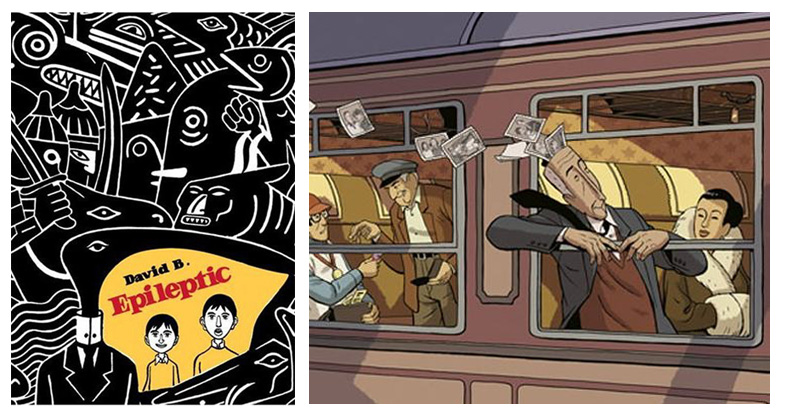
Left: Epileptic by David Beauchard. Right: Wrinkles by Paco Roca, a graphic novel about Alzheimer’s disease.
Reading about the project is interesting, but you’re instilled with a much stronger conviction for the case of comics in medicine by actually reading some of them. The narratives expectedly deal with difficult and harrowing themes. They draw you in and give you a greater understanding of and insight into a situation. And while there still exists a fallacy of comic books needing to be ‘comical’ (or dealing with lighter topics), in actual fact their power lies in leveraging image and text deftly to communicate to a wide audience. Graphic Medicine as a platform provides the space needed to explore the role of comics within healthcare.
Some of the comics can be read online. Look Straight Ahead by Elaine Will is about a teenager dealing with depression and bipolar disorder.
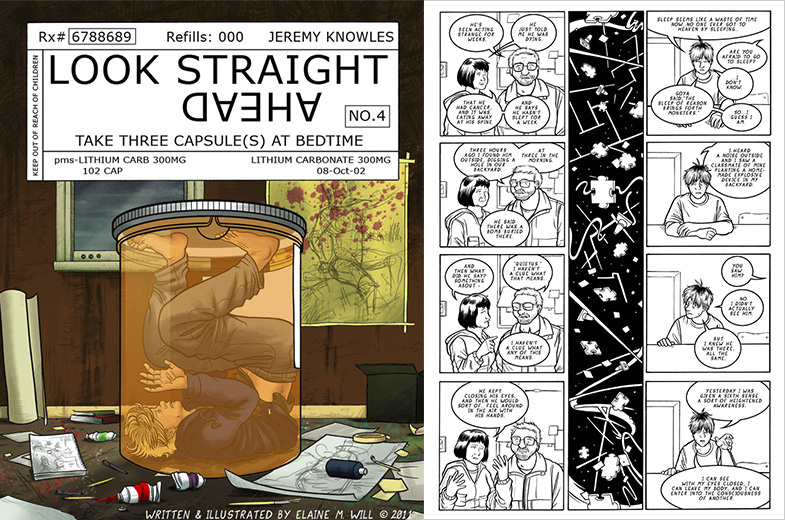
From Chapter 4 of Look Straight Ahead by Elaine Will.
Mom’s Cancer , published online twice a week, is written by Brian Fies, and is an account of his mother’s battle with metastatic lung cancer.
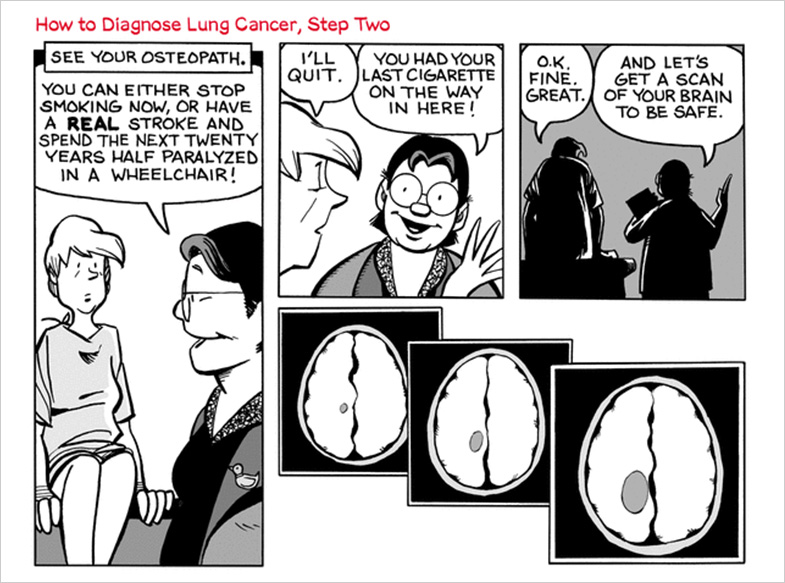
Mom’s Cancer by Brian Fies.
The resources available on the site are varied and allow you explore different facets of Graphic Medicine.
Comic Reviews and Editor’s Picks point you to different comics. A Graphic Medicine podcast is available through iTunes. You can submit a comic or become a guest author on the site, which helps adding new voices to the discussion. The Facebook page is active and frequently updated with news. Annually, Graphic Medicine also hosts a ‘Comics and Medicine’ conference—this year, the theme for the conference is Spaces of Care, and will be hosted from 16 – 18 July 2015 at the University of California, Riverside.
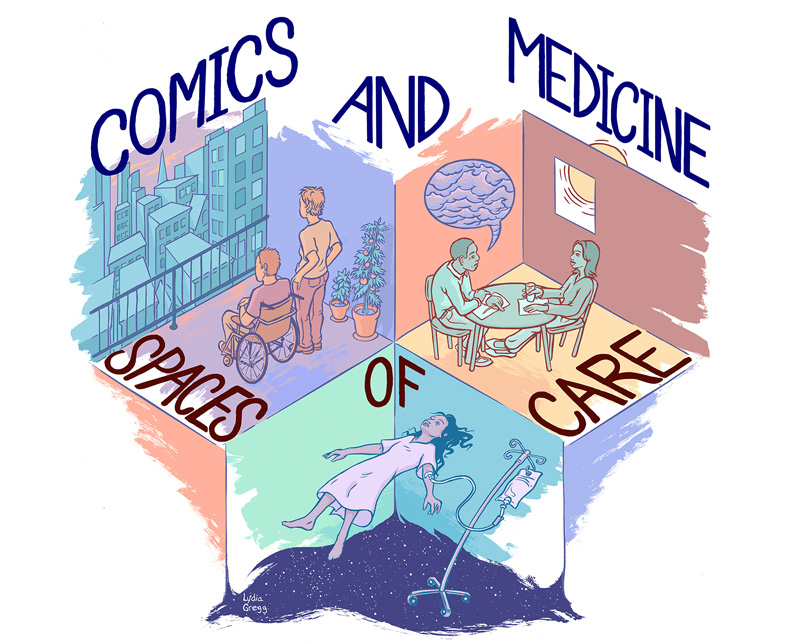
Poster for the upcoming conference on Comics and Medicine, themed Spaces of Care
External links and resources on the site encourage you to explore medical humanities, artists and authors, and other comic sites further
An eponymously titled book series, published by Penn State Press is available for purchase online. Currently, there are 2 books in the series, The Bad Doctor and The Graphic Medicine Manifesto.
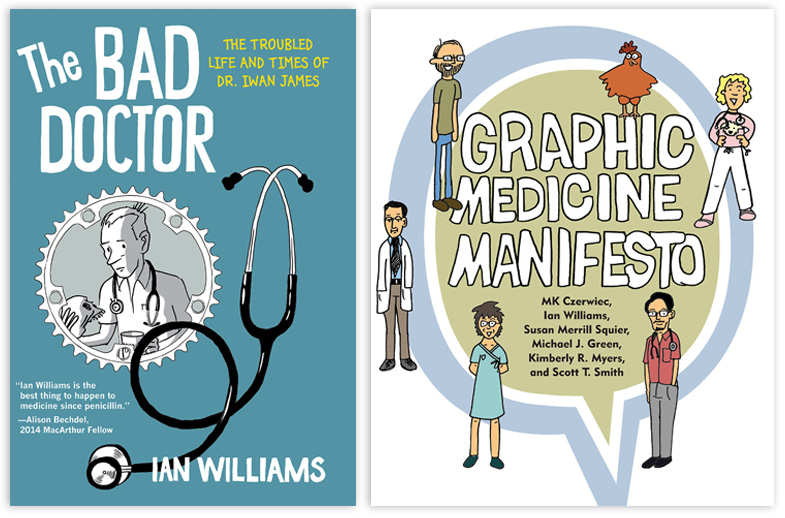
The two books within the series on Graphic Medicine: The Bad Doctor (left) and the Graphic Medicine Manifesto (right).
From the website:
“Curated by an editorial collective with scholarly, creative, and clinical expertise, the series is inspired by a growing awareness of the value of comics as an important resource for communicating about a range of issues broadly termed “medical.” For medical practitioners, patients, and families and caregivers dealing with illness and disability, graphic narrative enlightens complicated or difficult experiences. For scholars in literary, cultural, and comics studies, the genre articulates a complex and powerful analysis of illness, medicine, and disability and a rethinking of the boundaries of “health.” The series will be diverse in its approach. It will include monographic studies and edited collections from scholars, practitioners, and medical educators, as well as original comics from artists and non-artists alike, such as self-reflective “graphic pathographies” or comics used in medical training and education, providing a creative way to learn and teach.”
By using visuals, comics have the ability to directly immerse a reader in a specific context. Effectively harnessing visuals enable readers to develop a rich and layered comprehension of narratives, rapidly increasing the ability to connect with the scenario. The effectiveness of comics also lies in the ability of visuals to have a high recall value.
All images from Graphic Medicine / respective authors and artists, as indicated.

